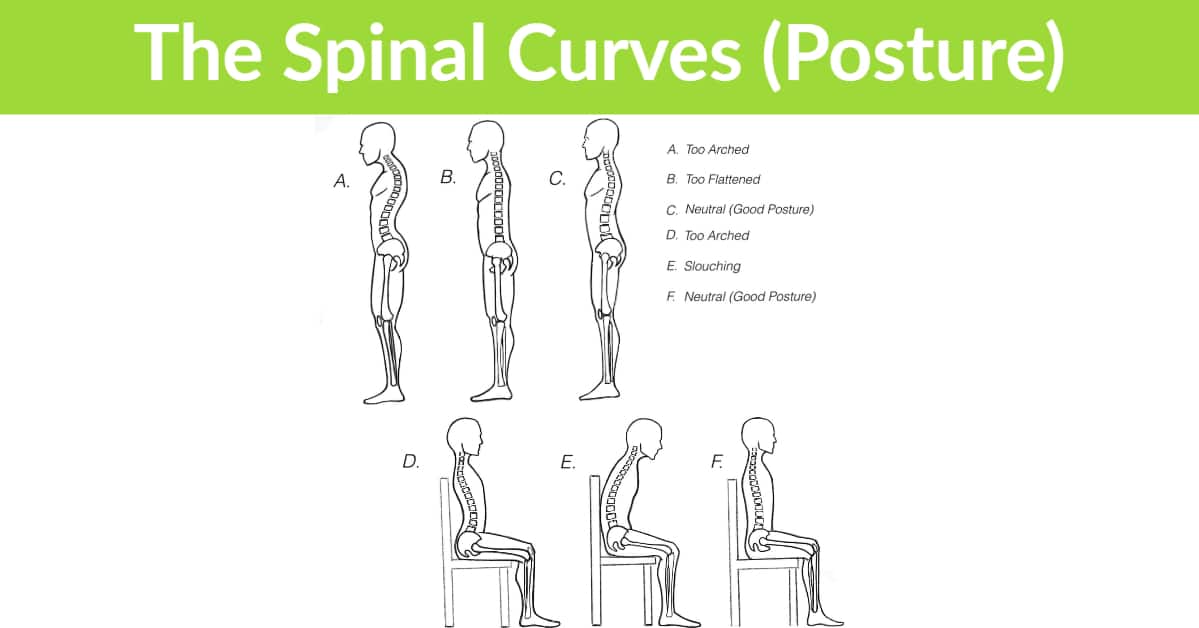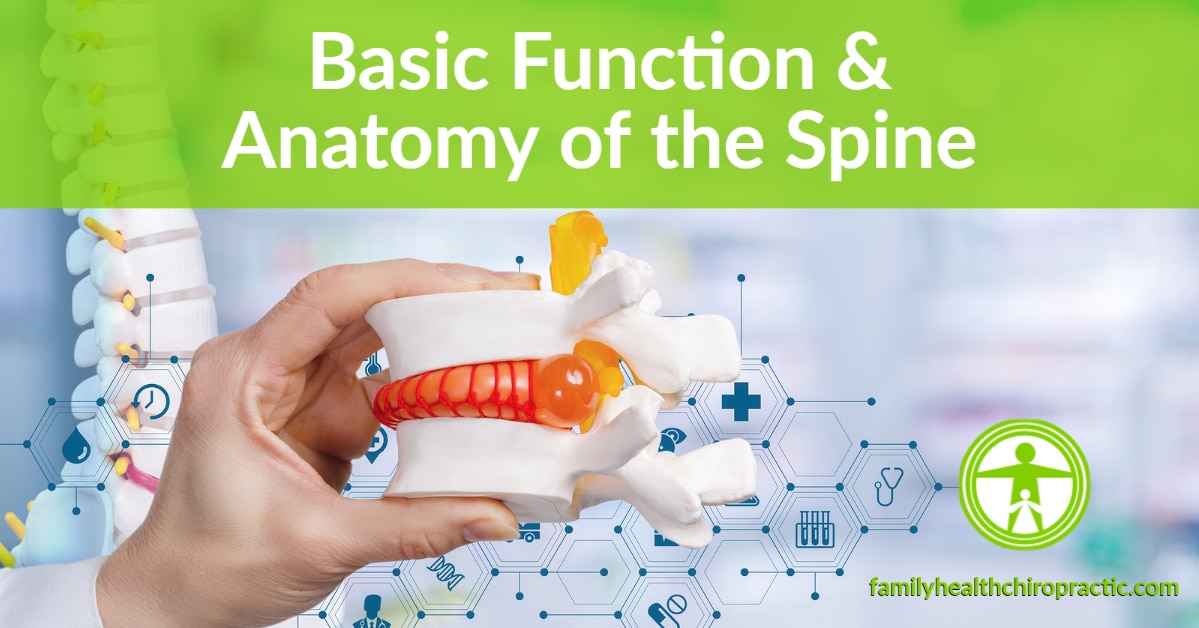Spine Anatomy & Function 101
If you're reading this, you either have a history of back and neck pain, or you're interested in learning more about how your spine works to hopefully prevent future episodes of back pain.
It never fails, every time I conduct a new patient examination and review x-ray findings, patients will tell me that their previous doctors never explained their problems to them.
This is unacceptable.
So many people get x-rays, MRI's, CT scans and all without ever really understanding what's happening.
So if you've ever looked at your images and had a discussion of ligaments, muscles and bones and you still didn't get it – you're not alone.
The purpose of this article is to help you understand a little more about the anatomy and function of the human spine.
The reality is, the more you know about your body and how it works, the more active role you can take in it's healing process.
The Vertebral Column
The spine, or vertebral column, is made up of individual bone segments called vertebrae superimposed, one on top of the other, and spaced apart by small, shock-absorbing, spongelike structures called intervertebral discs.
The purpose of the spine is to support the body’s weight, protect the spinal cord, and support two-legged human function in standing, sitting, walking, and all other activities of daily life.
I like to think of the spine as a chain or series of building blocks (units if you prefer) stacked in a column.
A total of 33 vertebrae form the spine. They are divided into sections based on the spinal curves they form.
The four sections are the sacrum and coccyx (tail bone), the lumbar spine (lower back), the thoracic spine (mid and upper back), and the cervical spine (neck).
I tend to think of the sacrum and coccyx independently since their individual vertebrae are fused and have no disc-like shock-absorbing structures interspaced between them.
The sacrum forms the solid base for the spine, where it intersects with the pelvic bones to form the pelvis, also referred to as the pelvic girdle.
This entire complex, made up of very strong bones, is vitally important as the foundation that supports the weight of the upper body and spreads that weight across into the legs.
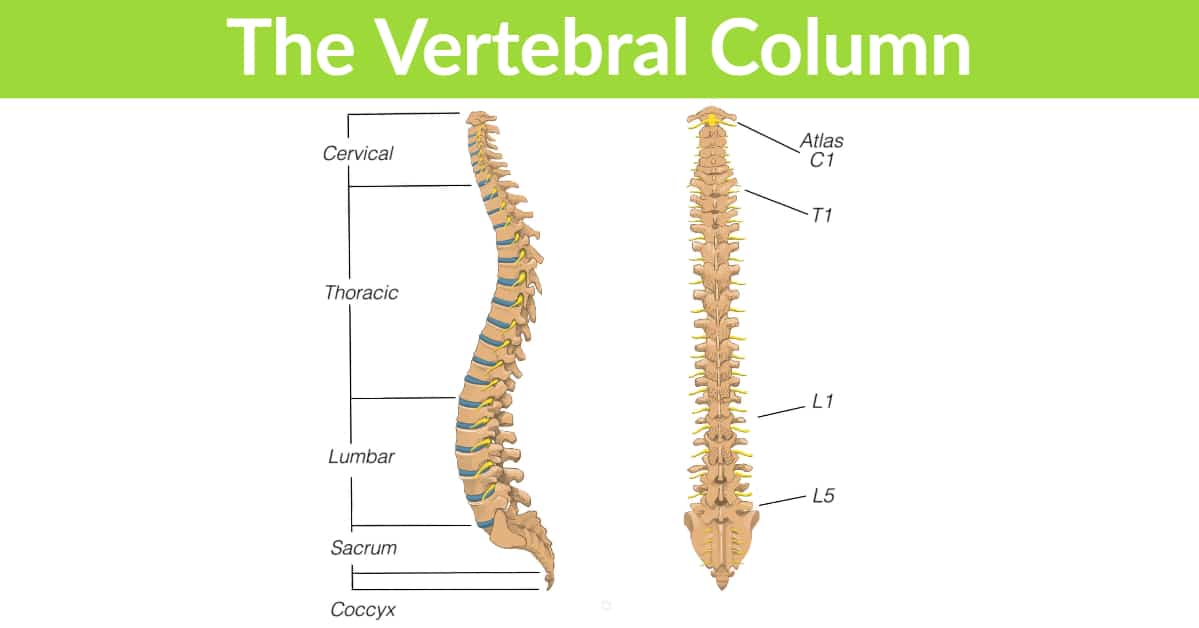
The Vertebrae
Each bony segment that makes up your spine is called a vertebrae.
As we discussed previously, each vertebrae is stacked one on top of the other which makes up the entire spinal column.
The front part of the vertebrae is considered the body and is primarily a support, weight-bearing, flexible structure .
The back part of the vertebrae is a ring-like structure that forms a hollow space housing where the spinal cord passes through.
This is why the spine and chiropractic care is so important.
When the vertebrae are not optimally aligned, the spinal cord is going to not be optimally aligned and problems and occur.
The back part of the vertebrae also consists of two structures called facet joints. Facet joints, like any other joint have a cartilage surface and are susceptible to wear and tear that may lead to degenerative changes such as arthritis.
Additionally, vertebrae attach to ligaments and muscles that connect and anchor them from above and below.
Ligaments serve as cable-like structures that hold bones together.
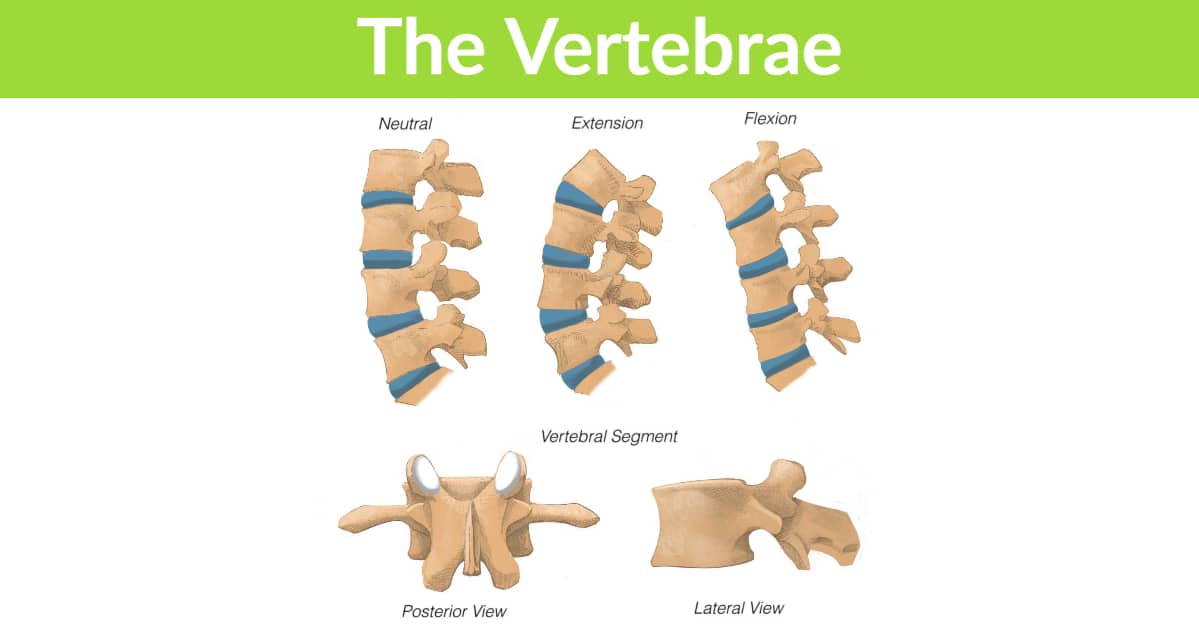
The Spinal Cord & Nerves
Let's now talk about the spinal cord and nerves. The spinal cord is simply an extension of the brain.
The nerves that exit your spinal cord are additional extensions that venture out and connect to all other major tissues and organs of your body.
This is the real reason why Chiropractic Adjustments are so important for your overall health.
We all know that the brain is the central processing system that runs the entire body.
We also know that every electrical signal in your body is generated by the brains coordination of nearly every physiological reaction.
These include signals that relay information about temperature, touch, pain, movement, awareness, digestion, breath, or heart rate.
The bundle of nerves that sends these signals to and from the brain constitutes the spinal cord.
Think of the spinal cord as a highway of nerves that runs north and south, encased in and protected by the middle of the vertebral column (the spine).
The spinal cord, together with the brain, form the central nervous system (CNS).
The CNS is vital for every function in your body. Quite simply, the CNS is your life.
In addition to the highway of nerves that run through the spine via the spinal cord, numerous exits along the way allows the spinal cord to connect to every body structure.
These exits occur at every level of the spine between each vertebral segment and resemble small holes that allow the nerves to pass in and out of the spinal cord.
These little holes are termed intervertebral foramina and are specific to each level of the spine, such as between C5 and C6 or L4 and L5.
The cervical spine (neck) has exit holes (foramina) to the left and right that provide signals to the arms, while in the lumbar spine the exit holes provide a nerve pathway to the legs.
Keep in mind that these exit points also transmit signals to and from every organ in the body including the heart and lungs.
The points at which the nerves branch off the spinal cord and exit to the outside of the spine are termed the peripheral nerve roots, which together form the peripheral nervous system (PNS).
As we will eventually explore, it is at these exit hole points that so many problems arise, as the peripheral nerve roots are prone to compression and stretching by various spine structures (disc, ligaments, bone spurs). Nerves under constant pressure wreak havoc on our body in many ways.
That is one reason why spine health must be maintained — or in most cases, reestablished.
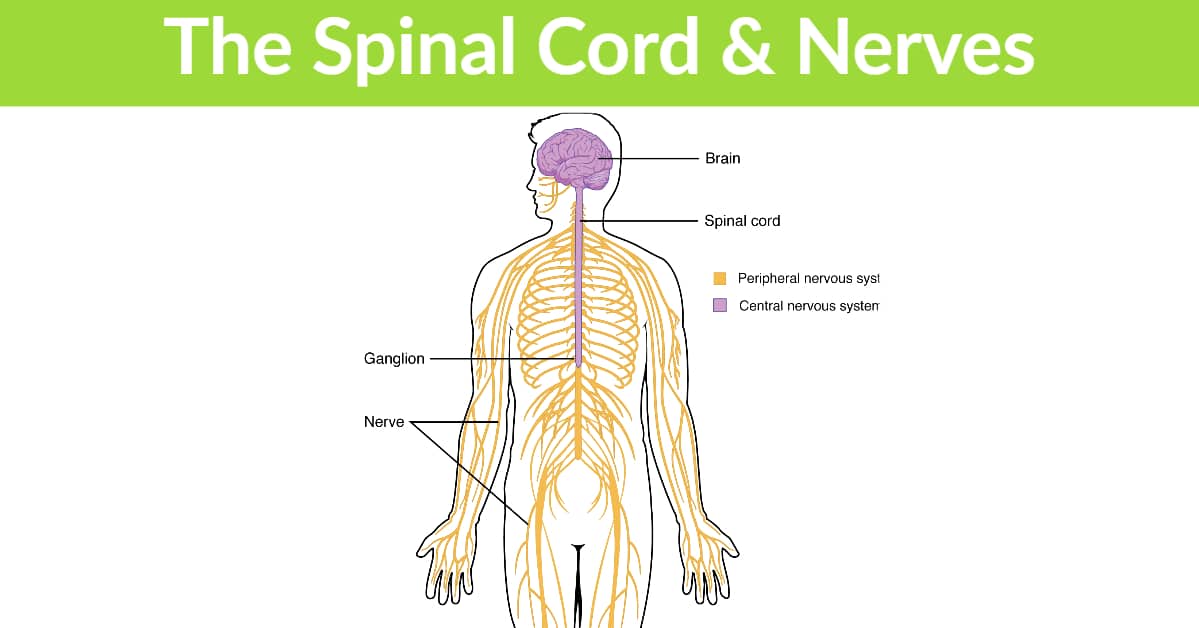
The Spinal Discs
Discs probably receive more attention than any other structure in the spine.
Most people learn about them in their damaged state — “bulging discs, ruptured discs, herniated discs.”
Discs are hydrodynamic, elastic structures spaced between two vertebrae, separating them and acting as shock absorbers.
Visually, they look like washers that space the vertebrae apart.
Several metaphors describe a disc, such as a tough jelly donut with a gooey inside, surrounded by a tough, fibrous, circular layer on the outside.
The gooey gel inside constitutes the nucleus pulposus, while the fibrous layered collagen sheets that envelop it constitute the annulus.
The nucleus gel of the disc is a blend of fibers, sugars, and acids. Its purpose is to absorb water and give it a spongelike function.
For the gel to maintain its hydrodynamic, water-absorbing function, it must receive nutrients like all other cells in the body.
In the early years of life, the gel is provided with nutrients via a blood flow through the vertebral segments above and below.
However, in the years of maturity, the vertebral bodies’ growth plates close, cutting off the critical blood supply to the discs.
From this point on, the gel matrix can only receive nutrients via a process that involves alternating compression and relaxation.
This pump-like effect allows nutrients to flow in and out of the central nucleus matrix from the surrounding annular ring layers and vertebral ends.
When the inner gel matrix is hydrated, it functions much like a tire with an internal pressure that separates the outer threads.
Think about how important it is for tires to stay inflated to effectively grip the road and how quickly the outer treads wear out when driven on low pressure, especially on curvy roads that require a great deal of turning.
When deflated they are sure to pop a flat.
The interior disc matrix functions in a similar manner.
It requires an internal pressure to spread the collagen fibers of the annulus outward so that those fibers can stay elongated and maintain their tensile strength to absorb shock and separate the vertebrae.
Of course, there are other variables that we will cover in the disc pathology section; but that, in a nutshell, is how discs work.
Imagine what happens to your discs if they don’t receive the mandatory alternating compression and relaxation, spongelike action that is essential for their health and function.
For example, if you sit all day long you do just that by squishing them constantly with no room for decompression.
Now imagine you combine excessive sitting and slouching with lots of bending and twisting.
You now have a deflated tire that is going to overstretch and possibly tear. Welcome to the world of bulging and herniated discs.
Make sense?
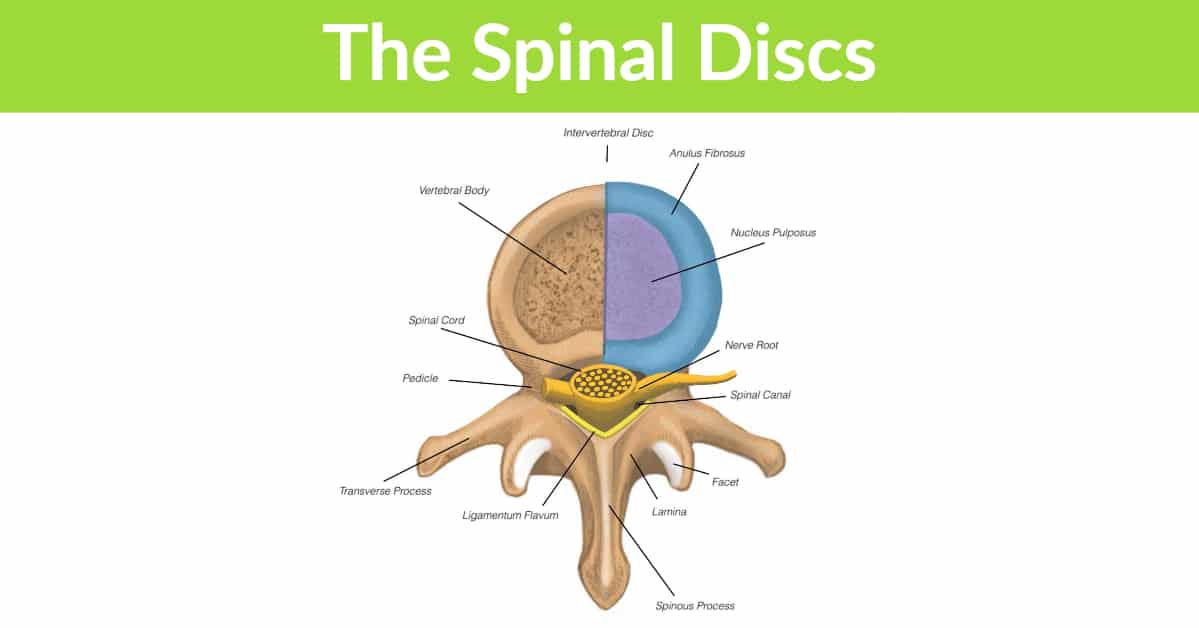
The Spinal Ligaments
Ligaments are cable-like structures that connect bone to bone.
They are slightly elastic and can stretch just a bit, but not too much, or they lose their stiffness and fail.
They also have a positional role (proprioception) in that their nerve endings send signals to the brain when they are stretched, alerting supporting muscle groups to contract to provide additional support to the surrounding joints.
They are critical for the structural integrity of every joint in the body.
Ligaments are especially important in the spine because of its long, narrow, vertical length and the many movable segments (vertebrae) that must be controlled.
Imagine building a skyscraper without support beams connecting the main components.
The whole thing would come crashing down.
The spine analogy is similar, and every ligament has an important role to keep motion in check.
If even one ligament fails, the entire system is compromised, resulting in an imbalance of weight and force that has severe consequences on the spinal structures (discs, joints, other ligaments).
Because the spine is capable of moving in multiple directions, it has ligaments that attach to its vertebrae at various levels and angles to give it greater support.
For example, thick, strong ligaments run the entire length of the back portion of the vertebrae (posterior longitudinal ligament) and function to keep forward bending in check while the opposite ligament groups on the front side (anterior longitudinal ligament) function to keep backward bending in control (Figure 4).
For every direction there is a ligament that functions to keep that movement in check.
The most significant point to make about ligaments is that prolonged bad postures and movements can overstretch them to the point they fail.
When that happens, the ligament can no longer impart stiffness to its connecting bones, and that disrupts the entire balance of forces across the joint.
This is where muscles come in to reestablish support.
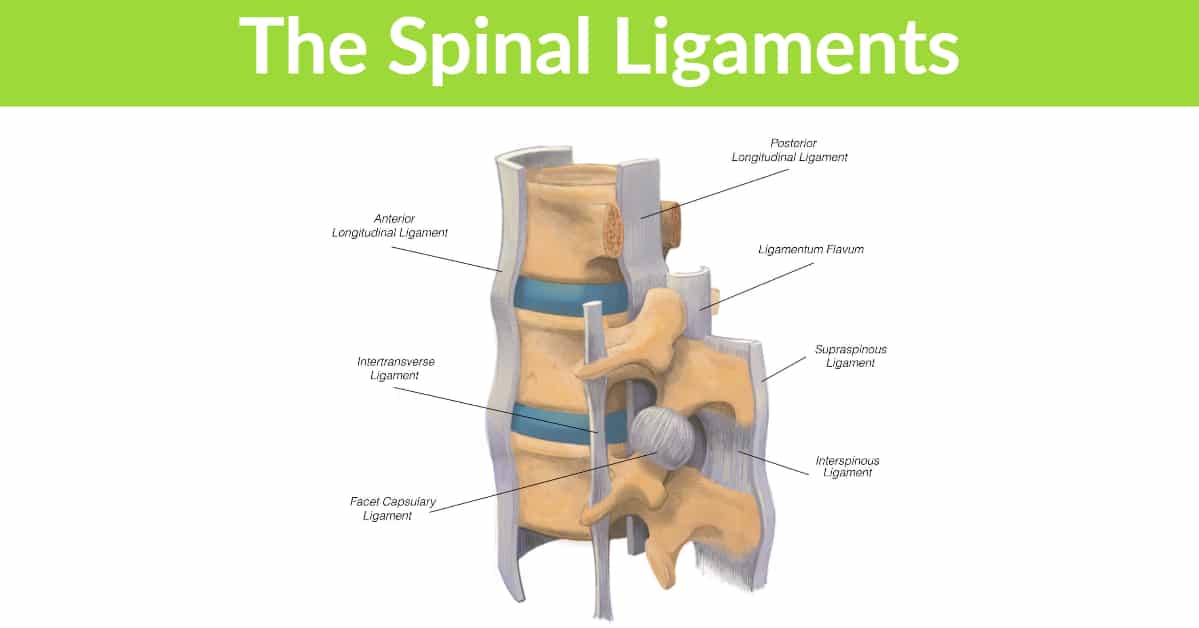
The Core Spinal Muscles
Let’s first establish a definition for the core, since it is often misunderstood and thought of as the midsection and the surrounding abdominal muscles.
It is really much more than abs of steel!
The core includes the chest, back, and abdomen as well as all of its bone structures including the spine, rib cage, and pelvic and shoulder girdles.
It is the link between the upper and lower body including, all of the muscles that span this distance.
The core muscles work together as an integrated system, similar to the way musicians complement one another in an orchestra.
They are essential to keeping us upright, resisting compression, and supporting our body weight.
They provide the framework for postural alignment that is required for every movement, from pushing and pulling to squatting and bending.
One of their main jobs is to keep the spine stable and supported so that the powerful hip and leg muscles can directly transfer the force they produce into the shoulders and arms (and vice versa).
Visualize a tennis server whose power is initiated by bending the hips and knees, then recoiling quickly upward and transferring force through the core into the shoulders and arms, eventually completing a powerful snap at the wrist.
Even the simplest of tasks like walking require that the core muscles work together to complete this energy transfer mechanism.
As we look at the core from the front, side, and back, we can break up the muscles into groups, but we always stress that they work together.
The degree to which each muscle contracts and imparts stiffness to their corresponding joint(s) will determine the total amount of stability in the spine.
Obviously, the core has many muscles groups that are all significant.
There are many muscles that make up the core they are all important to be working daily.
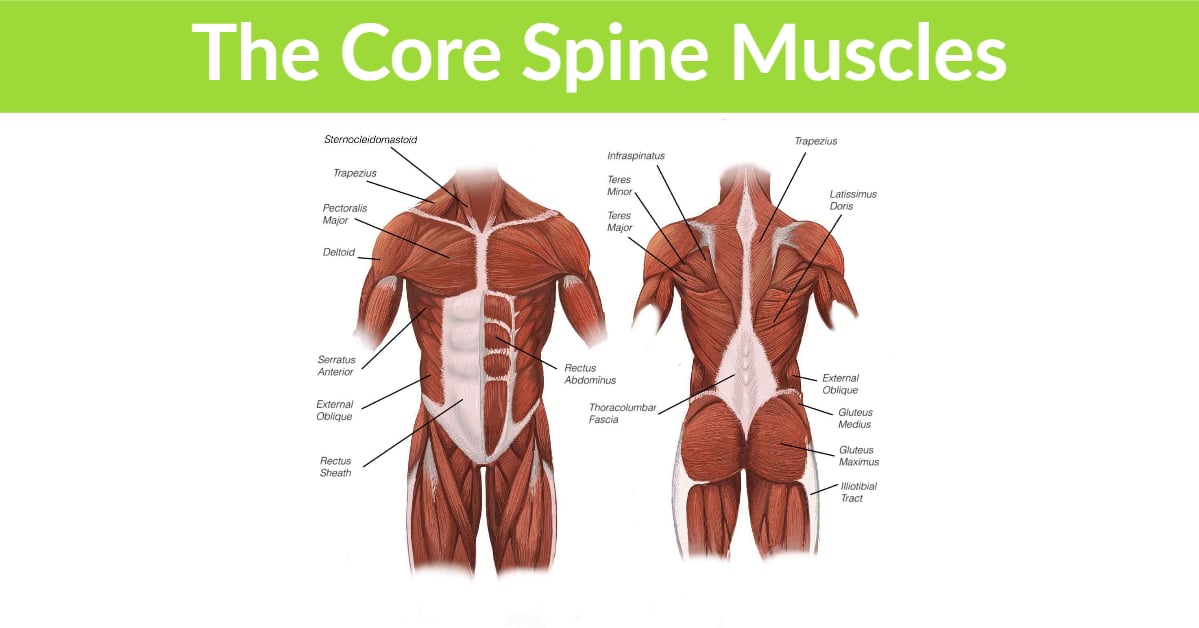
The Spine Curves (Posture)
Finally, we must appreciate the spine with all of its individual vertebral segments is not in fact vertical but made up of curves.
When viewed in the erect position these curves constitute the human body posture (Figure 8).
As mentioned earlier, the spine has three curves that correspond to the cervical (neck), thoracic (mid back), and lumbar (lower back) spine.
The spine curves are developed in the infancy period of life and are influenced through muscle contractions that pull and mold the spine as well as the angular shape of the discs.
In a healthy spine the curves bisect our center of gravity and balance each other.
They are essential for all aspects of two-legged human function. Because of their arch-like structural design, they impart strength to the spine that helps it overcome the compressive forces of gravity with minimal energy expenditure.
From an engineering perspective, the spine functions much like a suspension bridge that is designed to support massive amounts of weight.
Unfortunately, the spinal curves are directly impacted by prolonged poor posture and repeated bad movements (YOUR BEHAVIOR!) that can change the angle of the curves, often flattening them out or exaggerating them.
The low back and neck are particularly prone to flattening with age as the spine structures wear down from bad positioning.
Think about how many years you may have been sitting slouched or texting with your head looking down, or bending over poorly (Figure 8).
In these situations the spine ligaments, discs, and joints are all susceptible to overstress and often fail.
Muscles turn off and stop doing their jobs and the spine can no longer stay erect and properly absorb shock and load.
The entire core unit is compromised and therefore the ability to move efficiently, to overcome gravity without damage, and to do all other functions of human movement decline.
It is a perpetual negative feedback loop that corrodes and wears down the body.
Fortunately, the reverse is also true.
Doing the right things: the right exercises, the right movements in daily life, and the right postures can rebuild the core and take stress off of the spine.
And that is what we need to learn!
